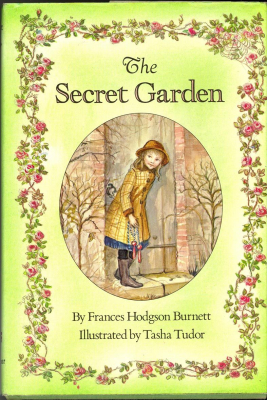
Frances Hodgson Burnett was born on November 24, 1849, in Manchester, England. Following the death of her father in 1854, her family faced financial hardships. In 1865, the family made the decision to immigrate to the U.S. and settled in New Market, a town near Knoxville, Tennessee. However, the anticipated support from a maternal uncle did not materialise as expected, adding further challenges to their situation.
Driven by the need to support her family, Burnett started writing for magazines at the age of 19. Her first published work was a short story called Surly Tim's Trouble, which appeared in a magazine in 1868. Burnett's breakthrough came with the publication of her novel Little Lord Fauntleroy in 1886, which garnered immense popularity and established her as a successful writer. She went on to write numerous novels, plays, and short stories, captivating readers with her vivid imagination and memorable characters. Some of her other notable works include A Little Princess (1905) and The Secret Garden (1911), both beloved classics in children's literature.
The Secret Garden
The Secret Garden novel was one of his popular novels. The novel centres around Mary Lennox, a 10-year-old girl living in India with her privileged British family. Mary is depicted as a self-centred and ill-tempered child, accustomed to being pampered by her domestic help while receiving little attention from her distant parents. However, her life takes a tragic turn when a cholera epidemic sweeps through the region, claiming the lives of her parents and the household staff, leaving her orphaned. After a short stay with an English clergyman's family, she is sent to live with her widowed uncle, Archibald Craven, at his Yorkshire estate, Misselthwaite Manor in England.
In the estate, Mary uncovers a fascinating neglected hidden garden. Assisted by Dickon, a local boy, and her cousin Colin, who suffers from a mysterious ailment, she begins to restore the garden to its former beauty.
What makes it a classic?
The healing power of nature
This novel highlights the enduring connection between humans and the natural world, and the positive impact that nature can have on our well-being. In today's fast-paced and technologically driven society, many people find themselves disconnected from nature, leading to increased stress, anxiety, and a sense of detachment. The theme of nature's healing power in the novel serves as a poignant reminder of the transformative influence that reconnecting with the natural world can have on us. The story emphasises the restorative qualities of spending time in nature, cultivating a garden, and embracing the outdoors. The process of tending to the garden becomes a metaphor for personal growth and emotional healing. Mary, Colin, and even Archibald finds inner peace, resilience, and a renewed zest for life as they immerse themselves in the natural beauty of the garden.
A novel about self-discovery
The Secret Garden is a captivating tale of self-discovery. Through the enchanting garden, characters such as Mary, Colin, and Archibald undergo transformative journeys. Mary learns empathy and love as she cares for the garden. Colin overcomes his fears and finds his own identity. Archibald finally musters the courage to confront the unresolved issues of his past, which he had been avoiding all this time and embraces healing. The garden serves as a metaphor for their inner landscapes, guiding them towards personal growth and fulfilment.
Their journeys demonstrate the profound impact self-reflection, connection with nature, and meaningful relationships can have in unlocking one's true potential and finding happiness.
Legal action against copycats
Frances Hodgson Burnett, the author of the beloved children's book The Little Lord Fauntleroy, did not back down when faced with piracy of her work. When an English playwright named E.B. Seebohm unlawfully adapted her book into a stage play, Burnett took him to court. The court ruled in her favour. declaring that Seebohm had illicitly copied portions of her book for his play. As a result, a legal order was granted, effectively putting an end to the era of British authors being exploited by copycats who freely profited from dramatising popular books.
In recognition of her efforts, Frances received a diamond bracelet and ring from The Society of British Authors, who also held a gala in her honour.
DID YOU KNOW?
- Originally published in 1910, The Secret Garden made its debut in the pages of The American Magazine, a publication primarily catering to adults. This unique start as a serialised story in a magazine for adults possibly led to some confusion regarding its target audience, as it became one of the first children's tales to appear in such a medium before being released as a standalone book.
- The name "Mary" in The Secret Garden draws inspiration from the English nursery rhyme Mary. Mary, quite contrary. In the initial chapters of the book, the protagonist is portrayed as a rude and spoiled child. The other children mock her by reciting the nursery rhyme and referring to her as "Mistress Mary Quite Contrary". While Burnett initially considered using Mistress Mary as the working title for the book, she ultimately settled on The Secret Garden instead.
Picture Credit : Google




